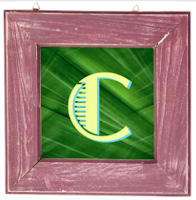Connecting 21st Century Learning, Technology, and Common Core Standards
 |
| CC by 3.0 Tracy Watanabe |
- communication and collaboration
- creative thinking and innovation
- curation: research and informational fluency
- critical thinking, problem solving, and decision making
- digital citizenship
- computing skills: using technology to learn, communicate, consume, contribute, design, and produce
In the introduction of the Common Core, those skills are referenced, and specifically outlined as a key design consideration, and placed in a portrait of a student who is college and career ready.
They are also interwoven in the anchor standards, which can be viewed by specific grade levels.
Academic conversations are part of 21st century learning and the Common Core Standards. Constructivism in learning, building meaning based on prior understanding, occurs in academic conversations (speaking and listening face-to-face and digitally, as well as in writing).
Academic conversations are no longer coming just from the teacher; they are taking place face-to-face and digitally with peers and others. Some digital examples are G+ hangouts, Skyping, webinars, etc.
I recently listened to a Schools Moving Up webinar by Nancy Frey called Collaborative Conversations: Speaking and Listening in Secondary Classrooms. Some of the highlights of that webinar were:
- Speaking and listening is no longer coming only from the front of the classroom. It comes in many forms face-to-face and digitally. Some digital examples are digital storytelling, webinars, video, and many other multimedia.
- Great speaking and listening skills are closely linked to writing.
- Three types of writing in the Common Core are: arguments, informational, and narratives. Blogging can help with all three of those.
- Speaking and listening is connected to the content! They will be better writers if they are better speakers.
- Accountable talk digs deeper and has sentence stems to help with getting those deep academic conversations (see University of Pittsburgh for more information about this).
- Sentence frames can help set up those conversations.
- Discussions can be fostered by the text-dependent questions (about a speech!)
- Close reading: Reading, rereading text and diving deeper includes critical thinking, and speaking and listening. Vocabulary and word choice would be a rich discussion for this (especially when looking at a speech).
- The webinar has great close reading and text dependent question connections and examples. Text dependent questions are not always "right there" answers, because sometimes it's inferred and requires critical thinking to deduce.
- Voki, Voicethread, Glogster, Audioboo, Goanimate, and all the digital storytelling apps and sites would be great ways to bring in speaking and listening with technology.
Technology enhances the learning
 |
| Mr. Lockwood's Class Mystery Skyping with Mr. Avery's Class |
Technology allows students to learn from outside the classroom, bring experts and peers in to learn new ideas and receive feedback on their learning. It also allows students to publish content and have academic conversations that couldn't exist due to time restrictions or proximity limitations. Technology allows students to learn and make connections beyond the four walls of the classroom.
Final thoughts
The shifts that need to occur in 21st century learning are the same shifts that need to take place to implement Common Core Standards. The bottom line is, it's just good teaching and learning.
- What relationship do you see with 21st century learning, technology, and the Common Core?
- How are you implementing the Common Core or 21st century learning in your classroom? How does technology enhance that?
- What connections have you made or questions do you have about 21st century learning, technology, and the Common Core?



Comments
Post a Comment
Directions for posting:
1) Choose "Comment As" first. If you don't have a Google/Blogger account, you can choose Name/URL and type in your name, then place the web site that best describes you in the URL (i.e. www.ajusd.org). Or, you can choose "Anonymous".
2) You may need to press "Post Comment" more than one time.
It is always wise to copy your comment before pressing "Post Comment" just in case something happens.
3) Type in the word verification.
4) If you did everything correctly, it will state, "Your comment has been saved and will be visible after blog owner approval." If you do not get that message, please try again.
Click here for a tutorial on how to comment.
Thank you!